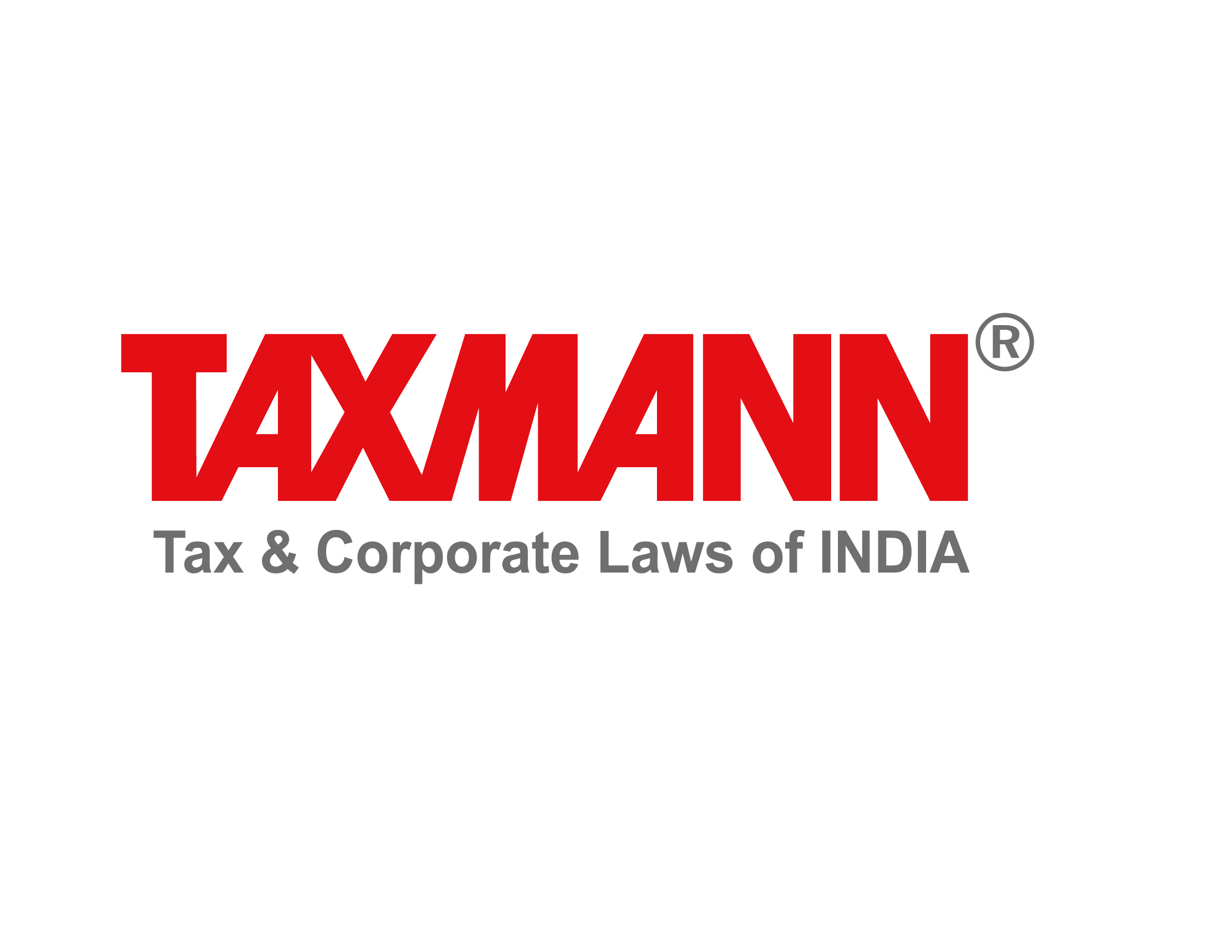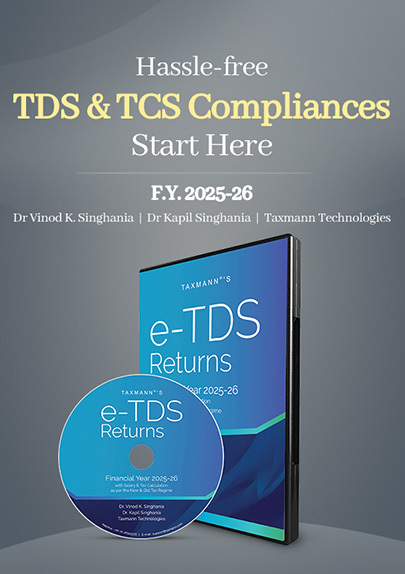[Opinion] The Continuing Competition – Non-Compete Fees and Its Characterisation
- Blog|News|Income Tax|
- 4 Min Read
- By Taxmann
- |
- Last Updated on 10 December, 2024

Dr Neha Pathakji – [2024] 169 taxmann.com 164 (Article)
1. Introduction
Taxation of non-compete feeshas provided a fertile ground for disputes, old and new, in the Income Tax Act, 1961. In simple words, non-compete fees is paid as consideration to a party to enter into an agreement comprising of a negative covenant or placing a restriction. Say for instance, the concerned party agrees not to pursue a similar line of business, profession or trade to compete with another party. Till the assessment year 2003-04, payments received as non-compete fees were considered as capital gains not chargeable to tax. However, this statutory position underwent a change and the Finance Act, 2002 introduced provisions to tax receipts from non-compete fees. Accordingly, there was now a possibility to tax non-compete fee either as ‘Business Income’ or as ‘Capital gains’. Thus, payments received as non-compete fees were made taxable section 28(va) as Business Income. However, an exception was made by virtue of proviso clause (i) which stated that if the non-compete was chargeable under the head capital gains, the same shall not be taxed under sec. 28(va). Sec.55(2) was amended to facilitate the calculation of the ‘cost of acquisition’ for computation purposes.
Taxation of non-compete fees whether during the pre-amendment period or post-amendment years has proved to be problematic. Whilst there exists commonality of issue in both periods, the difference lies in their consequence. Thus, the central question of enquiry remains the same- whether the nature of the non-compete fee received was capital or revenue. The consequence differs in that, during the pre-amendment period the capital nature of the receipt was not taxable at all and in the post-amendment it could be charged under capital gains or business income. Thus, while the underlying inquiry remains about the character of the income, it is important to take note of the assessment year pertaining to the income for its ultimate taxability. Therefore, the characterisation of non-compete fees continues to draw from the jurisprudence of the pre-amendment period. Recent ruling of the Telangana High Court in CIT v. Satiofi Healthcare India Private Limited revisits this continuing contest.
2. The Controversy
The assessee was engaged in the business of manufacture and sale of vaccine. By the use of its research and development team, it developed a Heptitis-B Vaccine becoming the first company in India to have developed such vaccine. It entered into an agreement with PFIZER regarding the said vaccine. As per the terms of the agreement the assessee granted the right to sale and market the vaccine under the brand name of PFIZER. It was also agreed between the parties that in case the assessee invented and developed or acquired the right to market any PFIZER shall have the option of becoming the exclusive co-marketer of such future product. Further, towards the end of the agreement period (i.e. fifteen years) PFIZER shall have the right to manufacture the product or a competitive product or source the product or competitive product from a third party. The assessee received Rs.6 crores under this agreement whose characterisation led to this dispute.
According to the assessee, Rs.6 crores was for transfer of technical know-how and for giving up the rights in any new vaccine which may be developed by it in relation to Hepatitis-B. As per the assessee it has surrendered its knowledge and technical know-how, which is a capital asset and therefore contended that any compensation received in lieu of such surrender is a capital receipt. since the assessee has entered into a non-compete agreement, the consideration of Rs.6 crore is towards the loss of source of income being a capital receipt. However, the Revenue authorities took the position that no capital asset has been transferred in favour of PFIZER. There is no sale of the brand under the co-marketing agreement but only a sale of vaccines and the receipt should be treated as revenue receipts. However, the Revenue authorities took the position that no capital asset has been transferred in favour of PFIZER Limited and there is no sale of the brand under the co-marketing agreement but only a sale of vaccines. It is contended that the said agreement neither affects the trading structure of the assessee in any manner nor the assessee is deprived of its source of income. The amount of Rs.6 crore amounts to a revenue receipt.
The Tribunal ruled in favour of the assessee ruling that a sum of Rs.6 crores received by the assessee was not only for transfer of capital assets but also for waiver of certain rights in enduring nature and for accepting certain restrictive covenants. The aforesaid amount was not received from transfer of stock in trade and therefore the same cannot be treated as revenue receipt.
When the matter was placed before the Telangana High Court, the High Court closely looked at the contract between the parties. In keeping with the settled legal position that a contract must be construed having regard to the intention of the parties and such an intention has to be gathered from the language employed in the agreement, the Court ruled in favour of the assessee. The High Court observed that as per the clauses of the contract, the amount was not paid to the assessee for purchase of stock. The assessee was paid a consideration for giving up the right to claim the patent and trademark yet to be obtained. Thus, the assessee have relinquished the rights in capital asset by entering into the agreement which is a restrictive covenant.
Click Here To Read The Full Article
Disclaimer: The content/information published on the website is only for general information of the user and shall not be construed as legal advice. While the Taxmann has exercised reasonable efforts to ensure the veracity of information/content published, Taxmann shall be under no liability in any manner whatsoever for incorrect information, if any.

Taxmann Publications has a dedicated in-house Research & Editorial Team. This team consists of a team of Chartered Accountants, Company Secretaries, and Lawyers. This team works under the guidance and supervision of editor-in-chief Mr Rakesh Bhargava.
The Research and Editorial Team is responsible for developing reliable and accurate content for the readers. The team follows the six-sigma approach to achieve the benchmark of zero error in its publications and research platforms. The team ensures that the following publication guidelines are thoroughly followed while developing the content:
- The statutory material is obtained only from the authorized and reliable sources
- All the latest developments in the judicial and legislative fields are covered
- Prepare the analytical write-ups on current, controversial, and important issues to help the readers to understand the concept and its implications
- Every content published by Taxmann is complete, accurate and lucid
- All evidence-based statements are supported with proper reference to Section, Circular No., Notification No. or citations
- The golden rules of grammar, style and consistency are thoroughly followed
- Font and size that’s easy to read and remain consistent across all imprint and digital publications are applied



 CA | CS | CMA
CA | CS | CMA
